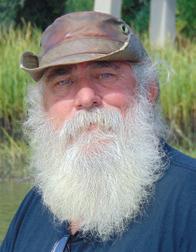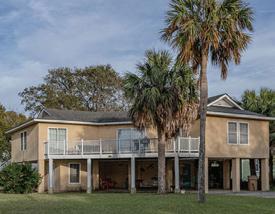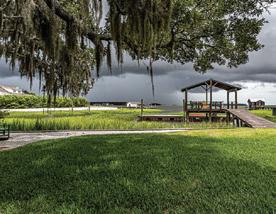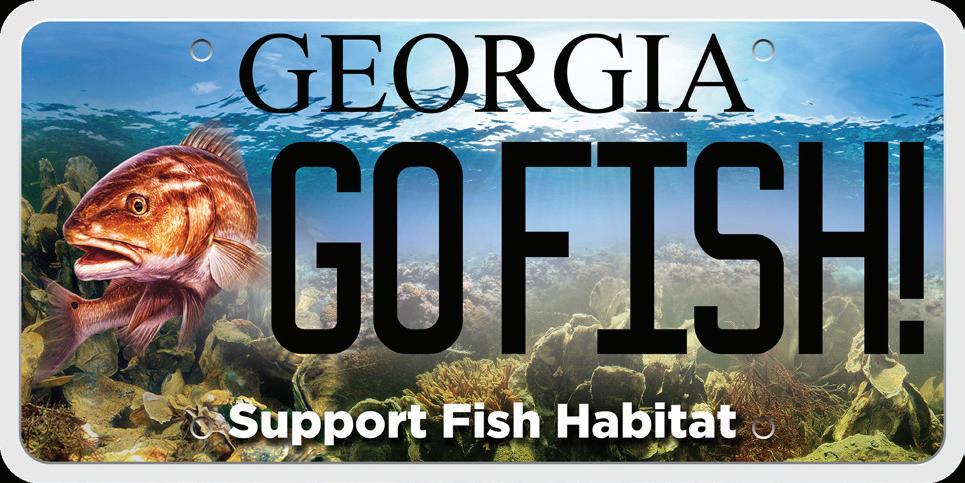Southern T ides

all about the water
September 2023


September 2023
















Amy Thurman amy@southerntidesmagazine.com
ASSISTANT EDITOR
Neva Parsons neva@southerntidesmagazine.com
EDITORIAL ASSISTANT
Brandyn Bradford
CONSULTING NATURALIST
John "Crawfish" Crawford subtropicalnaturalist@gmail.com
THE BITTER END COLUMNIST
Captain J. Gary "Gator" Hill theoriginalcaptaingator@gmail.com
THE RIVERKEEPER REPORT
Meaghan Gerard meaghan@ogeecheeriverkeeper.org
TALES FROM A BOATING NERD
Cynthia Lamb cynthia.l.lamb48@gmail.com
Contributors
Nick Riccio, Jr. Wildlife Photographer
Jane Wilkinson-Bunch
Southern Lovin' in the Oven Recipes
Michael Vatalaro BoatUS Magazine
Top: Peak hurricane season. Stock photo.

Center: Great blue heron in flight.


Bottom: Wilderness Southeast turns 50.
Image provided by WiSE

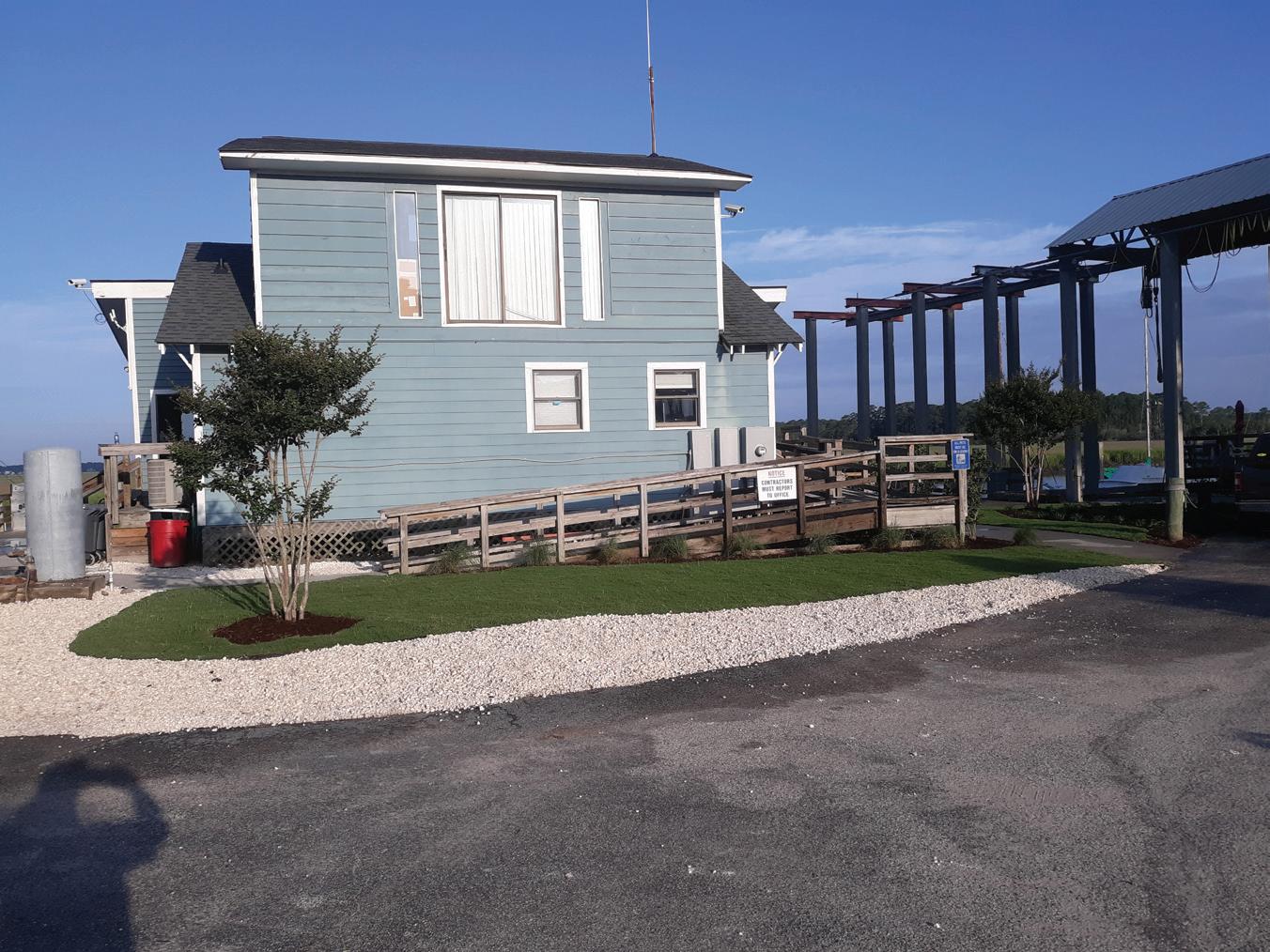
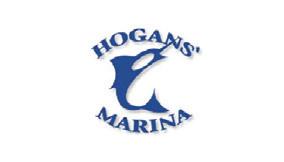

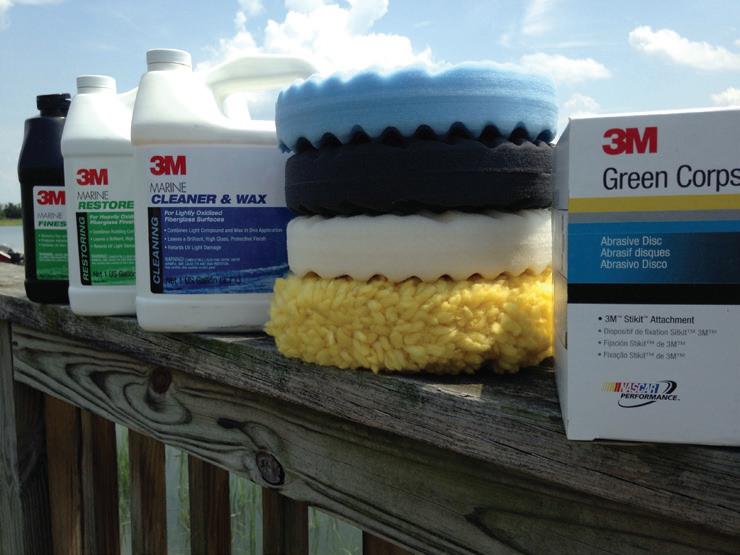
It’s been an eventful month since I last sat down to write this column.
One nice change for the better has been a slight dip in daily temps from the upper 90s (or higher) to the low 90s and even into the 80s. In other words, we’ve gone from ‘unbearable’ to merely ‘hot,’ and hopefully that’s the last of the triple-digit heat indexes for the year.
Also since the last issue, we had our first hurricane season event, in the form of Idalia, that made landfall as a Category 3 hurricane in the Gulf before moving into Georgia and weakening to a tropical storm. We got lucky again, but please, please don’t become complacent about preparing for these storms. They won’t always be near misses. See article on pages 12-13.
Both NOAA and Colorado State University’s Tropical Weather and Climate Research department have increased their earlier forecasts for the number of storms for the season. We’re already at 12 named storms, at print time, and we’re only halfway through the peak season (mid-August through mid-October).
school or college level and be a positive influence in the world.
Brandyn will be assisting Meaghan in compiling the Riverkeeper Report, taking on the Did You Know? section, as well as doing some writing and assisting with editing.

Over the summer I made a mental note to reach out to Christy Mroczek, the intern coordinator I work with at Georgia Southern (and Armstrong prior to the changeover) to ask about potential interns for the fall semester, since it will be our last semester in publication. Before I had the opportunity to get in touch with her, Brandyn got in touch with me and I knew from our first conversation that he was going to be a great fit! He’s highly intelligent, has solid written and verbal communication skills, is personable, and a pleasure to work with! Welcome Brandyn and thank you for the excellent job you’re doing!
Although the trend this year seems to be storms arcing north into the Atlantic rather than heading for the Gulf or East Coast, that doesn’t mean they all will. Also, Idalia actually began as a disturbance in the Pacific, off the coast of Central America, before crossing land into the Gulf and building strength. Which isn't exactly common.
Yes, I know, I harp at all of you every year to be prepared. But like with most things in life, it’s better to have and not need, than need and not have.
At the moment, Lee is building strength and expected to become a major hurricane after this goes to print. If our luck holds, it will turn north and lose strength in the Atlantic, somewhere between the U.S. and Bermuda. But if not, the East Coast could face a direct hit. Be ready!
On a happier note, I’d like to welcome Brandyn Bradford to our crew as our new editorial assistant. A senior at Georgia Southern, he’s interning with us for the fall semester. Brandyn is majoring in English with a minor in writing/linguistics. His goal is to go on to earn a master's degree in English, become a teacher at either the high
On another note, this September issue marks the ninth anniversary of Southern Tides. Nine years! Can you believe it? Some days I can, and some days I can’t!
Hope you all enjoy the cooler weather as we head into fall – remember some of the best fishing of the year is ahead! And stay safe and prepared.
See you out there!



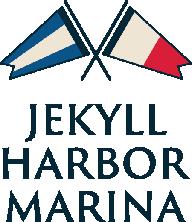




When one first learns about boating, there are lots of terms, concepts, and rules to remember. Many boaters end up using different memory tools to learn and to recall them all.
Mnemonics, rhymes, and sayings are great ways to remember things. To this day, I still know the names of all the great lakes because of the HOMES mnemonic.
Recently, I got to wondering about the most useful memory aids for boating. Read on for some of my favorites, including a couple I made up myself.
“Red sky at night, sailors delight. Red sky at morning, sailors take warning” is a very old mariner rhyme that we’ve probably all heard. My mother used to say it all the time, and she wasn’t even a sailor. Supposedly, the concept of a red sky at night predicting fair weather for the next day is over two thousand years old and is even cited in the New Testament. According to NOAA this old saying does have a scientific explanation and is correct in most cases (it works in the mid-latitudes in the Northern Hemisphere).
“Red right returning” might be one of the most wellknown and useful sayings (again, even my mother knows this one). This is a way for boaters to remember on which side of the marker/buoy they should pass. When coming from a larger body of water (i.e., the sea) to a smaller one, any red marker should be on your right.
My husband and I spend a lot of time going in and out of the ICW, which has its own set of rules. When traveling the ICW, remember red right south or green right north (GRN).
Many people remember which side of a boat is port and which side is starboard by remembering that the words "left" and "port" have four letters and end in T. Also remember that the red navigation light is located on the port side because the light and port wine are both red. So, if you’re boating at night, and you see a red light at the bow of a boat, you know you are looking at the port side.
“The bend is your friend.” I heard this one from a guy at our marina last year. I love it. This rhyme helps keep you from running aground in a meandering river or creek, where water flows fastest along the outside of the bend, and slowest on the inside. The faster-running water scours the bottom, making the outer part of the bend the deepest part. In straight rivers or creeks, the fastest flow tends to be in the middle. This rhyme could use a little enhancement though. You don’t want to go too far to the edge of the bend; about ¾ of the way is about right. My contribution to this phrase would be: “The bend is your friend, but not to the end.”
“If birds soar, boat some more.” I’ve been working
on my weather forecasting skills using both technology and natural methods, many of which rely on birds. For example, if you want to know the wind direction, look at which way birds are pointing as birds like to face into the wind. Also, if you’re at the beach and all the seagulls fly inland, head for the car.
Another weather sign looks at birds in flight. Generally, high-flying birds indicate fair weather and low-flying birds are a sign of rain. Many researchers say that it’s all about birds sensing the changes in atmospheric pressure. Birds find it uncomfortable to fly high in low atmospheric pressure. I’m not sure this concept is totally reliable, but it does have a lot of merit based on what I’ve been reading.
“45 degrees and it’s a breeze.” To safely cross the wake from another boat, slow down and approach the wake at a 45-degree angle. It’s not only safer, but it makes the ride much more comfortable for your passengers. According to BoatUS, “taking waves at an angle converts some of the severe pitching motion to rolling motion, giving a more comfortable ride at a slightly faster speed.” The concept is time-tested; I just made up the phrase.
“If you tack, it will save your back.” The 45-degree angle concept is not just for crossing wakes but can be used to take on head seas as well. Although a straight line may be the shortest distance to where you want to go, it’s not always the safest, or most comfortable approach. If you find yourself in rough conditions, take the seas at a 45-degree angle; first to one side then the other, allowing equal time for each tack to maintain the same average heading. I thought tacking was only for sailboats until I took our boat handling class. Brilliant.
Want to know more? Email me!
Stay safe and have fun out there.
Cynthia is a resident of Saint Simons Island where she lives with her husband Jerry. She spends as much time on the water as she can fit into her schedule and is a selfproclaimed Boating Nerd. You can reach her at: Cynthia.L.Lamb48@gmail.com










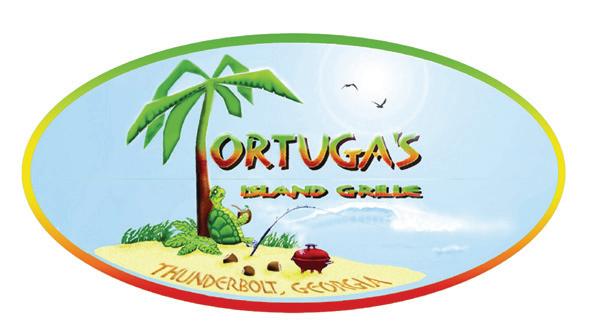
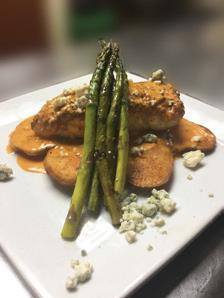

Contributed by Jane Wilkinson-Bunch Southern Lovin' in the Oven Recipes & More Daily
These stuffed mushrooms are packed with flavor and oh-so-good!

Don't forget to support your local seafood markets or catch it yourself!
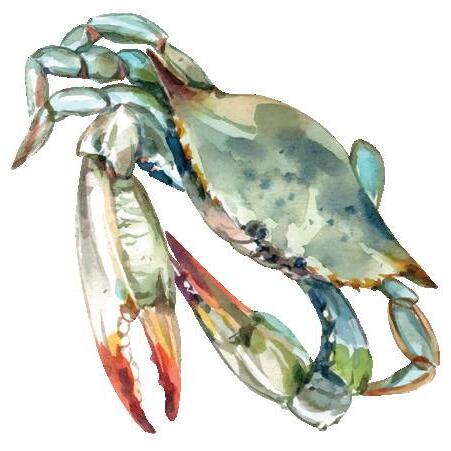

32 medium mushrooms (white or baby bella)
1 tbsp oil
1 tbsp onion, finely diced
2 garlic cloves, minced
¼ tsp dried oregano
¼ tsp dried basil
¼ tsp dried thyme
¼ cup cream cheese, softened
¼ cup sour cream
¼ cup mozzarella cheese
1 cup crab meat, picked
Salt and pepper to taste
¼ cup parmesan cheese, grated
Fresh parsley, chopped, for garnish
• Preheat oven to 350°. Grease baking sheet or line with parchment paper and set aside.
• Clean mushrooms. Remove stems and gills, then finely chop stems and gills and set aside. Set mushroom caps on baking sheet.
• Add oil to a sauté pan over medium heat. When pan is warm, add onion, garlic and diced mushroom bits. Saute two minutes, then remove from heat.
• Mix in dried spices, cream cheese, sour cream, mozzarella, and crab meat. Season with salt and pepper.
• Spoon mixture into mushroom caps then sprinkle tops with grated parmesan.
• Bake for 30 minutes or until golden
• Garnish with chopped parsley and serve.
Submit your recipe along with photo to amy@southerntidesmagazine.com.
Although early forecasts predicted Hurricane Idalia could reach the Georgia coast as a Category 1 storm, it was downgraded to a tropical storm shortly after crossing the Florida Panhandle into Georgia, and the track went slightly further west that was anticipated in earlier forecasts.
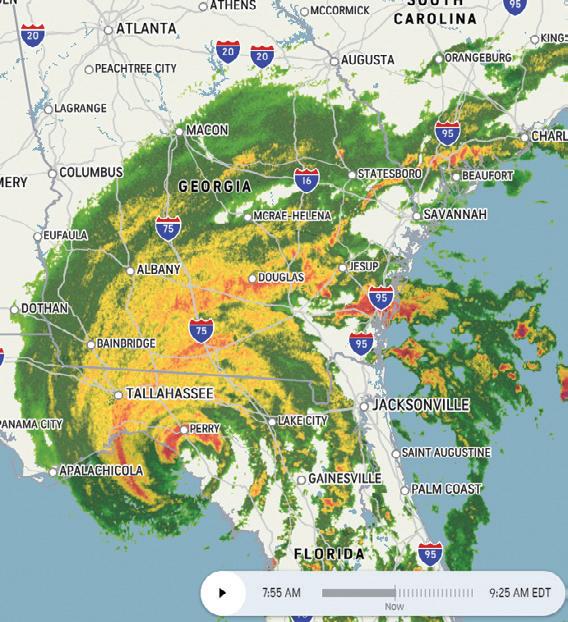
Once more, the Georgia Coast got lucky. But that might not be the case next time.
Two days after the storm I walked into a store behind a woman and her young daughter and heard the woman say, “Everyone lost their minds about that so-called hurricane but I knew it wasn’t going to be anything to worry about. It never is.”
Wow. Really? Maybe she’s a meteorologist who specializes in severe weather and knew more about the path and strength of Hurricane Idalia than any of the other experts, but somehow I doubt it. My guess would be that like many coastal Georgia residents she has the mistaken belief that our stretch of coast is somehow protected, safe from hurricanes.
By Amy ThurmanSome people believe the Georgia Bight, that curve arcing west of the rest of the east coast, prohibits storms from making landfall here. Some believe the shallow waters of our wide continental shelf keep us safe. Some believe that a storm can lose all power if it crosses land to reach us after making landfall in the Gulf, and while it can and often does lose significant strength, it is still possible for a major hurricane to maintain hurricane-strength winds over land for long distances. It’s also possible for a tropical storm to do significant damage and cause fatalities.
These faulty beliefs can and do lead to a false sense of complacency. And that complacency is bolstered by the fact that we’ve had a number of near misses in recent years. Many people just don’t trust the forecasts anymore, even though forecasting has improved dramatically in the past half dozen years. While it’s true that complete accuracy isn’t currently possible, it’s important to remember that forecasters must provide the public with all possibilities, to include worst-case scenarios, for the sake of safety. Imagine how angry you’d be if there was a possibility the storm could have come directly over you and you weren’t warned!
We have been lucky, but that’s all it is – luck. There is no geographical feature or known weather pattern that protects the Georgia coast. How long will our luck hold? If you’re not willing to gamble your life, the lives of your family members, or your property on luck, then common sense dictates that you should take at least basic precautions when there’s a potential for danger.
Yes, it’s inconvenient to prepare for a storm that never comes, or that comes and is far weaker than what was predicted. But how inconvenient would you find those preparations if they saved you thousands of dollars in damage or even saved your life or the life of someone you love?
If you choose not to adequately prepare for potential severe weather, you’re gambling on luck. Not only for yourself, but your family, your neighbors, emergency responders, your property and property near you. We’re still in peak hurricane season (August/September), and late season storms have become more common in recent years.
Don’t gamble – prepare.
Radar image of Hurricane Idalia on the morning of August 30, shortly after landfall. Image provided by AccuweatherWhen preparing for any potential danger, understanding the risks is the first step. When it comes to hurricanes, the potential for direct impact is far from the only risk.
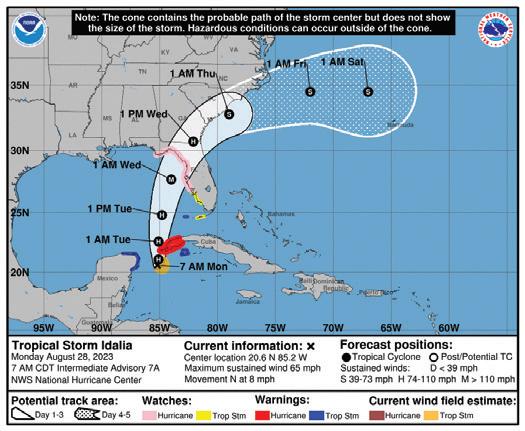

Flooding can be influenced by known factors: tide stage, moon phase, recent rainfall and ground saturation, and property elevation. Unknown factors: storm path, wind direction, and stormrelated rainfall. Dangers: unpredictable currents causing personal injuries, home and vehicle damage, roads and bridges damaged, power outages, drinking water contamination, lengthy clean-up and repairs.

Dangers can include downed power lines; trees downed on homes, vehicles, businesses, and across roads blocking emergency access; roof damage; flying debris damaging home, property or causing personal injuries.



With every tropical storm or hurricane, regardless of strength, comes the risk of spin-off tornadoes, which can cause more damage with less warning.
Additional risks can include lightning strikes, emergency services being overwhelmed, accidents and injuries related to clean-up such as equipment accidents and falls from ladders, improper generator usage-related injuries, and heat stroke and other medical emergencies can happen.
Left: Idalia's forecasted track. Above: Hisortic activity. Images provided by NOAA Left: Downed trees can cause extensive damage.

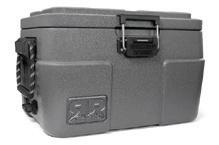





















Ogeechee Riverkeeper


(ORK) is soliciting submissions for their 4th annual photo contest. Judges will be looking for images that highlight what makes the Ogeechee and Canoochee rivers, and the surrounding areas remarkable. Submission categories include: landscape, portrait, wildlife, plant life, underwater, aerial, black and white, and funny wildlife. Winners will receive a free membership to the organization and ORK merchandise. Submissions due by November 6, 2023.
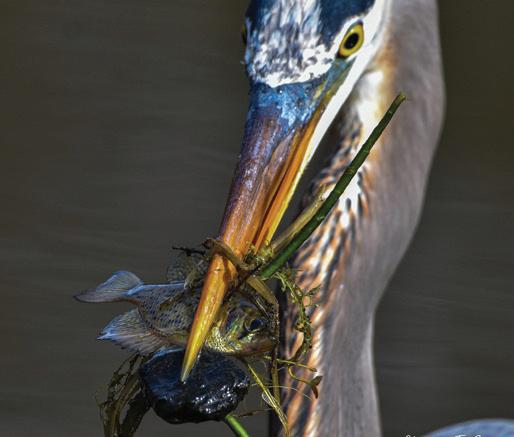
Winners will be announced early December 2023. For rules and submission guidelines, visit www.ogeecheeriverkeeper.org/ annual-photography-contest.
Join the Altamaha Riverkeeper (ARK) and become a water protector! ARK is holding an Adopt a Stream training in Brunswick, GA on Saturday, September 30, 2023. Participants will learn how to monitor water chemistry and bacteria levels that affect our waters. Once certified to be a water quality monitor, volunteers can choose any waterway that is safe and convenient for them to test monthly. This data is then entered in a statewide database that is publicly accessible. For questions and registration information, contact Maggie with Altamaha Riverkeeper 912-223-6073 or maggie@altamahariverkeeper.org..



St. Marys Riverkeeper’s biggest fundraising event of the year is happening soon! Join us on October 21st from 6:30p-10:00p at Sugar Pointe Estate for live music from Firewater Tent Revival, an outstanding silent auction and raffle, a delicious Lowcountry Boil, door prize, and MORE! Funds raised will support St. Marys Riverkeeper’s education and outreach programs, water quality monitoring, and advocacy efforts.


As development explodes throughout the St. Marys River watershed, the need to regularly test the water quality grows in urgency. Without the support of our members and sponsors, our beautiful black water river would be vulnerable to pollution and degradation. Don’t miss this opportunity to TOAST to a healthy and thriving St. Marys River.
www.stmarysriverkeeper.org/lowcountryboil2023/





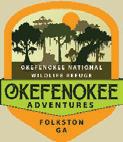





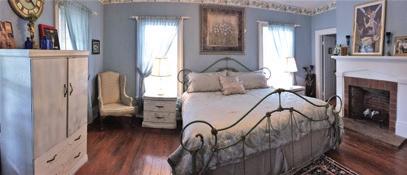

Great blue heron can be found almost anywhere in North America, from southern Alaska to northern Mexico, year round. They're also the largest heron in North America!

Great blue herons have specialized vertebrae in their necks that allow them to fly and perch with their necks in an "S" shape.



Appearance
◆ Can be over 4 feet tall
◆ Wingspans of 6 - 7 feet
◆ Dark stripe on head behind eyes
◆ Blue-gray feathers on back and wings
◆ Yellow-orange dagger-shaped bill
◆ Plume on back of head
90
Habits & Diet
◆ Stalks for prey in shallow water
◆ Hunts by sight
◆ Eats mostly fish, but will also eat insects, crustaceans, amphibians & more.

◆ Excellent eyesight allows both day & night hunting.
of waking time is spent hunting for food.
Parenting & Offspring
◆ Both parents incubate nest (about 28 days).
◆ Females lay 3-7 pale blue eggs between mid-March and mid-June.
◆ Eggs hatch between April & July
◆ Young fledge after 2 months.
Great blue herons are mostly silent but will give a short sequence of squawks when startled or alarmed.
Compiled by Amy Thurman Photos by Nick Riccio, Jr. Bathtime at a pond on Jekyll Island.

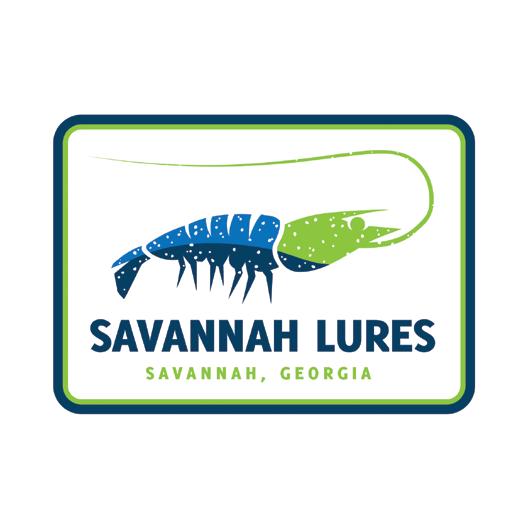
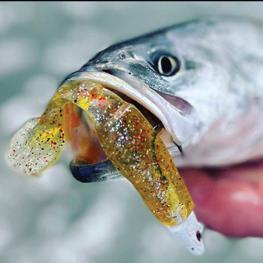

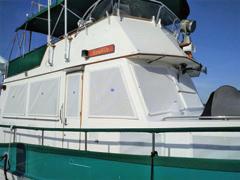

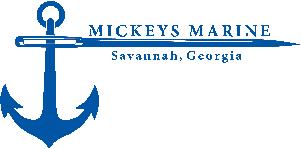
In a perfect world, your boat would pop up on plane and run relatively flat and level with no input from the helm. But that’s in a perfect world. In reality, boats are rarely evenly weighted port and starboard, and adding passengers often destroys whatever balance the designers engineered in the first place. The good news is there’s an easy fix in the form of trim tabs.
Trim tabs are a pair of “paddles” for lack of a better word, at the transom of your boat. They articulate up and down at a hinge that rests just slightly above the bottom edge of the transom. In some cases, these tabs are mounted into specially designed pockets, so they don’t protrude behind the boat. But they’re still recessed so they don’t interact with the flow of water past the hull until they’re deployed.
The tabs are controlled at the helm with two buttons or joysticks – one for port and one for starboard – marked Bow Down and Bow Up. The beauty of these individual controls is twofold. First, they allow the tabs to work independently, so you can correct for a list to port or starboard using a single tab. Second, they’re wired so that activating the portside tab controller actually makes the tab on the starboard side of the transom deploy, and vice-versa, so you have intuitive control at the helm. When you want to lower the port side, you simply press “Bow Down” on the port tab controls, and the starboard tab deploys to lift the starboard corner of the transom, lowering the port side. The lift that is necessary to lower the bow is created when the tabs begin to interact with the water.
In their fully retracted position, trim tabs don’t interact with the water as it races past the hull when the boat is on plane. However, if you push “Bow Down” on one or both of the tab controls at the helm, the tabs at the stern deploy downward and begin deflecting water. This does two things: it creates lift at the stern, lowering the bow. And it creates drag, reducing your efficiency slightly. Note that on inboardpowered boats, this can improve the angle of thrust from the props, cancelling out the increased drag.


You can also use the trim tabs to level out the boat and adjust for list by deploying the trim tab on the side of the list. When adjusting the trim tabs to correct for a list, it’s best to use short bursts of trim, then pause to allow the boat to settle so you can judge the effects of your adjustment. Overcorrecting can lead to an unpleasant
surprise, with the boat heeling over hard without warning, particularly if your passengers shift around in response. Also, get into the habit of making sure your tabs are fully retracted before pushing the throttles forward each time you go to get on plane so you don’t get caught off guard by a tab-induced list. Most trim-tab manufacturers offer an autoretract feature for this reason.
In addition to correcting for a list, trim tabs can also be handy to raise or lower the bow of the boat slightly when heading into a quartering sea. You can often improve the ride and reduce the amount of spray by changing the way the bow and chine interact with the chop as you cut across the wave faces. With a hard-chine boat, lowering the leading edge of the chine on the windward side by deploying the trim tab on the opposite side can knock the spray down sooner, reducing the amount that flies back into your face at the helm. However, lowering it too far can make it catch the face of each wave, resulting in more pounding than necessary. With a round, soft-chined boat, you may want to raise the windward side of the bow. The spray will come up farther back on the hull and may be thrown clear of your position at the helm. Experimenting a bit with your boat will reveal what method works best for your circumstances. This article was reprinted with permission of BoatUS
By pushing down into the stream of water passing the boat, trim tabs create lift at the transom, which in turn lowers the bow. Photo provided by BoatUSUnderstanding how trim tabs work is the first step to using them effectively, getting up on plane, and smoothing out your ride.
What images do the word “explore” bring to mind? An Indiana Jones-type trek to a far-flung, exotic land thousands of miles from home? An ocean voyage to an ancient civilization on a lost island? Makes for a great blockbuster movie, but it’s not real life. Real life isn’t that exciting.
Or is it?
One local organization might change your mind about that. Wilderness Southeast (WiSE) knows that exploring what is essentially your own backyard can be more thrilling – and a lot more fun – than any movie. This Savannah nonprofit is celebrating 50 years this year, and continues to offer naturalistled eco-tours into the wilds of Coastal Georgia. Whether it’s paddling through a salt marsh to discover creeks teeming with marine life or beachcombing on a wild island in the company of sea turtles and ospreys, the emphasis is on a fun-filled excursion into the natural world. But it goes deeper than that.
The Wilderness Southeast motto is: Explore. Discover. Understand. The founders – Dick and Joyce Murlless and John “Crawfish” Crawford – figured that the best way to inspire good stewardship of an environment is to understand that environment. And how better to understand it than to experience it through exploration and personal discovery?
Wilderness Southeast’s first ventures after its founding in 1973 were group tours to Central and South America, as well as sailing expeditions. But with the riches of coastal Georgia right at its fingertips, the organization narrowed its focus to the rivers, islands and marshes of home.
The menu of eco-trips includes things like a paddle
along Ebenezer Creek, kayaking a salt marsh, customized birding trips, and exploring the Savannah Wildlife Refuge or Okefenokee Swamp. WiSE provides naturalist guides and necessary equipment for these forays for individuals, families, or small groups.

For example, you can choose to spend two nights and three days in the Okefenokee Swamp guided by Cathy Sakas. Sakas knows her stuff – she’s a professional naturalist who has clocked more than 350 trips into the world’s largest freshwater swamp. With 10,000 alligator inhabitants, it’s likely you’ll spot these creatures while paddling the watery avenues of their neighborhood. Cypress trees and water lilies. River otters and sandhill cranes. These are just a sampling of more than 620 plant species and dozens of fish, amphibian, reptile, bird and mammal species Cathy may introduce to you on this trek.
Additionally, there are other programs geared to larger groups, and some specifically for the Girl Scouts which provide opportunities to earn badges. For schools, there are WiSE Field Trips which are customized to grade levels and curriculum. And since 2002, the Fish Gotta Swim program has provided hand-on science education courses for Chatham County Public School students funded in part by grants and generous donors.
As the organization celebrates its 50th anniversary this year, it continues to connect people with each other, and then with the greater world to which we all belong. As poet Gary Snyder observed, “Nature is not a place to visit. It is home.” Wilderness Southeast’s mission seems to be to remind us of this fact, and to give us an opportunity to come home.
Paddling Ebenezer Creek. Photo provided by Wilderness Southeast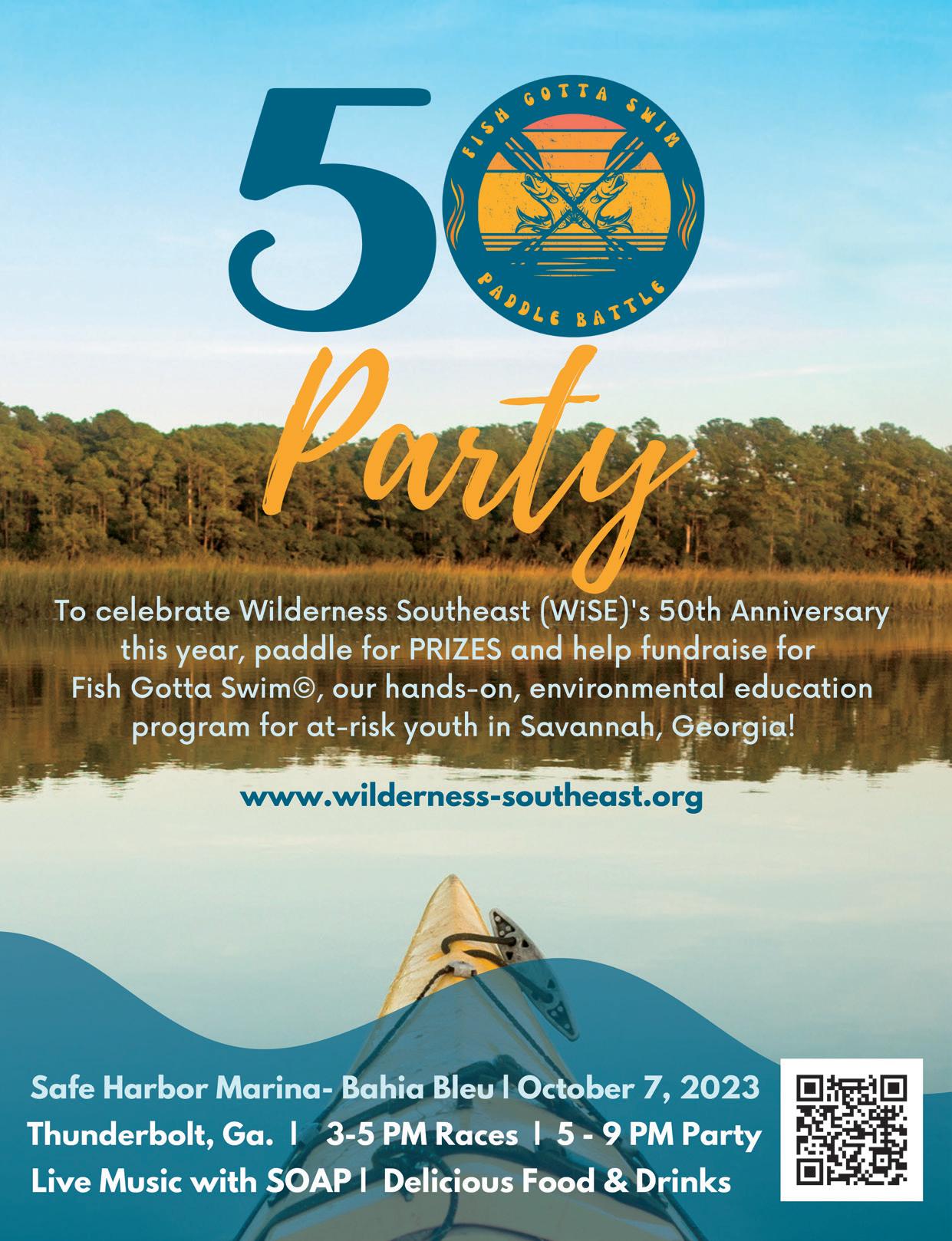
So, I’m at work running the boat the other day and I get a text. I give it a quick glance to see who it's from and as it turns out, it’s from my editor for this column. So like any good writer, I promptly ignore it; after all, I have to stay alert so as not to put my passengers at risk. Right? Right.
When I got back to the dock I gave it the usual oh-crapwhat-does-she-want-now look. And also as usual, it was her monthly reminder that I have a column coming due. [Editor: Or past due, as the case may be.] Which brings me to the computer this morning, just hours before Hurricane Idalia is due to hit the Savannah area. So here we go.
Working in the tourism business, I try to stay current on changes in the sciences, as we do cover a widespread wealth of information about the local environment while educating our guests. Nearly a decade ago they changed the name of our beloved Spartina alterniflora to the slightly less melodious sounding Sporobolus alterniflorus, meaning “seed thrower.” That one has taken me some time to try to change when doing my talks.
Recently, there’s also been a big change in how we perceive and refer to our dolphin friends.
For many years, most dolphins on the East Coast were classified as Tursiops truncatus, or the common bottlenose dolphin. Then there was a distinction made between those that live primarily in the ocean versus those that live in near-coastal and inland waterways, which came to be referred to as coastal bottlenose.
Then researchers found that some pods living in inland waters, usually within a roughly 10- to 15-mile radius, so these groups were reclassified as estuarine bottlenose dolphins. Still, the common thought was they were all the same family of Tursiops truncatus until some breakthrough studies led in an entirely new direction.
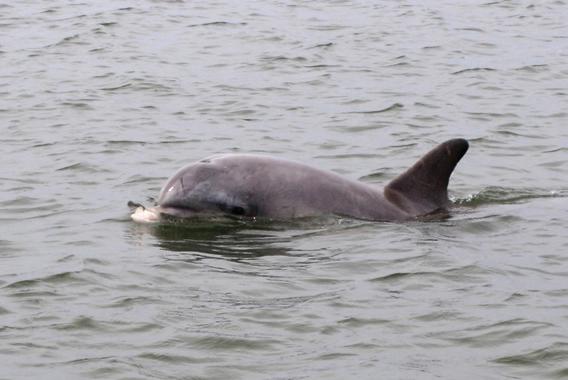
Yet another classification, Tursiops erebennus was described by Edward Drinker Cope in 1865. Cope noted physical attributes that differed from T. truncatus. However, that name was dropped and Atlantic bottlenose were all pretty much rolled into one family, with only minor distinctions based where they lived, giving rise to coastal and estuarine varieties.
All that changed over the last eight years or so when a
research team lead by Ana Costa, PhD, Eric Archer, PhD, and others, who retrieved specimens from stranded dolphins up and down the east coast from New Jersey to Florida. The researchers found that the morphology, mitochondrial DNA, and nuclear DNA varied from offshore bottlenose and those found in coastal waters.
They have also noted physiological differences in the skull and vertebrae and that these coastal dolphins are possibly more closely related to the Gulf and Caribbean bottlenose, though further studies will have to be done to determine this.
An interesting side note: while researching this I learned that one common name for Tursiops erebennus is Tamanend’s bottlenose or Tamanend’s coastal bottlenose. The name Tamanend comes from Chief Tamanend of the Turtle Clan, Lenni-Lenape tribe, where the original specimen was collected in what is now New Jersey. His name translates to English as “wisdom and peace.”
Need to wrap this up now as Idalia has knocked out the power, but I hope you found this as interesting as I did.
'Til our wakes cross again, peace and love, and shrimp and grits. I'll see you on the water!
Captain Gator has spent the past several decades truly living the salt life, from living on and racing sailboats, to being a paddle guide, to becoming a 100-ton master and working in the tour boat industry. A strong love of history and the water has shaped him into becoming one part educator, one part entertainer, and one part storyteller. When asked if he is a native, his reply is yes, by osmosis.
TheOriginalCaptainGator@gmail.com
